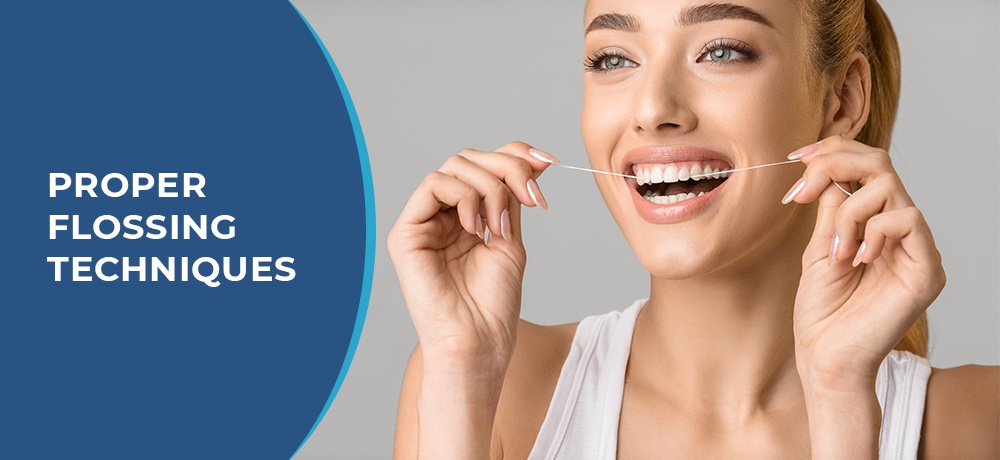Proper flossing techniques

Why floss?
Flossing is important because proper flossing helps remove plaque and food particles from those spaces between the teeth where a toothbrush can't reach. So if all you do is brush, you're missing an opportunity to promote not only healthy teeth, but also healthy gums. Research shows that regular flossing can reduce the risk of developing gum disease.
What tools do I need for proper flossing?
While knowing how to select a proper toothbrush is important, there is no special trick to selecting the right type of floss. Most products will work just fine.
What is the proper way to floss my teeth?
Although flossing can be intimidating at first, learning and practicing the proper technique will help you to become more comfortable and efficient. Try following these simple steps in front of a mirror, or ask your dental professional to show you how to floss at your next dental checkup.
- Wind about 18 inches of floss around the middle fingers of each hand, leaving about five inches between your hands.
- Pinch the floss between your thumb and index finger on each hand and leave about one inch in between.
- Gently guide the floss down between all the teeth using a gentle sawing motion, pulling the floss in a "C shape" around the entire side of the tooth and sliding it under the gum line. Use an up and down motion to clean the entire surface of the side of the tooth.
- Pull the floss out from in between the teeth. As you move to the next tooth, unroll clean floss from one finger and wind the extra floss onto the other finger. Floss each tooth with a clean section of floss, gradually working your way around your mouth, cleaning both sides of each tooth.
Flossing tips
- Use a pattern - start at the back upper right tooth and move to the upper left side. Then go to the back lower right tooth and move around to the back lower left side.
- Establish a routine.
- Practice and improve your technique.
- Avoid wrapping the floss too tightly around your fingers.
- Remember to rinse your mouth thoroughly after flossing to remove loosened food particles.
- If the floss catches or tears you might want to try a different type/brand of floss (e.g., waxed vs. unwaxed).
- If your teeth are too tight to floss, talk to your dentist about it.
- If you are just beginning to floss, your gums will likely bleed. Once your start to floss regularly the bleeding should stop. If the bleeding continues, see your dentist.
Article Courtesy: https://www.medbroadcast.com/channel/oral-care/oral-care/proper-flossing-techniques
Comments: If you have never been shown how to properly floss, or require a refresher lesson, please do not feel embarrassed to ask us at your next appointment. Once patient's see how easy and quick it can be, adding flossing to your daily oral home care routine becomes much easier.